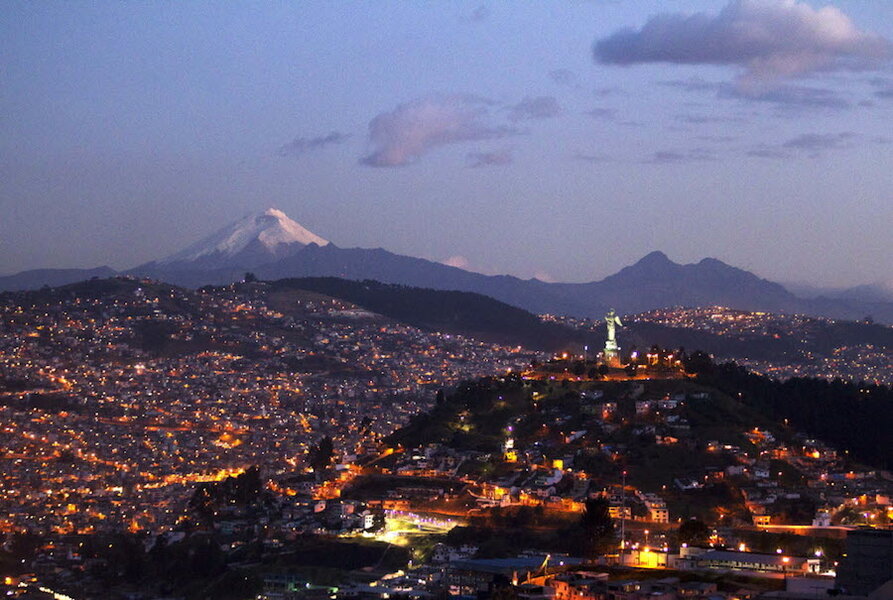Ecuador's Cotopaxi volcano sputters back to life
Loading...
Residents in Ecuador woke up to find the Cotopaxi volcano “coming back to life” Friday after two early blasts released bursts of ash reaching two miles high.
Observers at Ecuador’s Geophysical Institute detected a swarm of earthquakes Thursday, the largest of which had a magnitude of 2.7, which led to minor explosions heard by climbers on Friday.
They stressed that the nearly 20,000-foot snow-capped volcano is not about to erupt. Yet authorities closed the surrounding Cotopaxi National Park, a popular tourist site, and suspended mountain climbers’ hikes up the peak as a precaution.
"We recommend climbers take precautions around the crater, given the possibility of explosions which release rocks or energetic emissions of vapor and volcanic gases that could be harmful," the institute said in a statement.
The observatory’s Patricio Ramon identified the explosions as small phreatic eruptions, usually triggered when molten rock, or magma, meets water and produces a violent steam release.
"The situation merits the population staying informed about what's happening with the volcano," Mr. Ramon told Teleamazonas TV, according to the Associated Press.
Cotopaxi’s bursts left an opaque blanket of ash covering Quito, the country’s capital, located about 30 miles from the volcano, leaving highways, homes, and cars coated with a fine gray powder.
One onlooker captured the volcano’s explosion soaring above clouds in a short video taken during a flight.
Cotopaxi began showing renewed activity in April. Two months later, the Geophysical Institute detected tremors that ranged from 10-15 minutes.
Located in a heavily populated area, the volcano has erupted more than 50 times since the 16th century, according to Oregon State University.
It’s considered one of the world’s most dangerous volcanoes, thanks to its glacial cover that makes it vulnerable to fast-moving volcanic rock and mudflows known as lahares.
Its last major eruption in 1877 melted snow and ice on the summit, producing mudflows that traveled as far as 60 miles (100 km) from the volcano. Cotopaxi’s most recent explosion occurred in 1904, as reports of a 1942 explosion have not been confirmed.
This report includes material from Reuters and the Associated Press.






